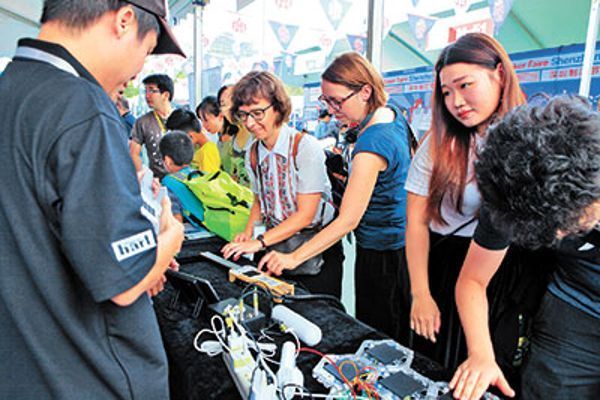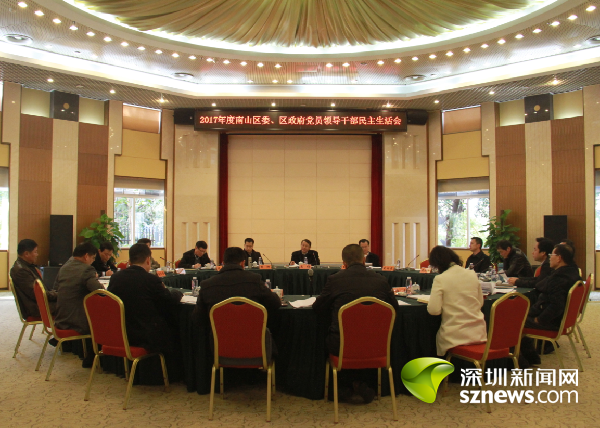Mind-controlled drone at Maker Faire
2017-11-13 来源: Shenzhen Daily

Expat and local residents try an electric music instrument at Maker Faire Shenzhen yesterday at Shenzhen Polytechnic.
IT might sound unrealistic if someone says he can control a drone with his mind, but that’s what really happened at Maker Faire Shenzhen, which was held at the Shenzhen Polytechnic between Friday and yesterday.
Many visitors were stunned when they saw a young man who was wearing a head controller to fly a drone with his mind. The mind-controlled drone was one of the products being displayed by a Nanjing-based company called Glarun Innovation at the Maker Faire.
Zhou Yang, spokesperson for Glarun Innovation, said the drone was actually controlled by the user’s brainwaves. According to him, the head controller has multiple sensors that can recognize a user’s brainwaves when the user gives different orders to the drone, such as flying forward, backward or making a turn, after it completes a process to learn the user’s brainwaves.
“We’ve been developing the product for one and a half years. It is expected to go on to the market next year,” he said, adding that the technology can be applied to drones produced by any brand.
Another product showcased at the booth of Zhou’s company was a sign-language translator, which can recognize the sign language gestured by deaf people and translate it into Chinese. The device can display the translated sentences on its screen and read it out for users.
According to Zhou, they have been developing the translator for over a year and it is not fully developed yet because the algorithm for sign-language recognition is very complicated.
Over 200 exhibitors from nearly 30 countries attended this year’s Maker Faire. Nearly 30 globally renowned makers were invited to the event as guest speakers, including Davide Gomba, an Italian maker and founder of the first Italian Fab Lab.
Gomba runs a project called Casa Jasmina in Italy, with the goal of integrating traditional Italian skills in furniture and interior design with open-source electronics to create a smart home.
According to Gomba, makers in Italy are willing to spend more time designing and researching a product before getting it on the market, as the country has a long history of product design.
He said things are different in China because Chinese makers are building their products in a very efficient way. “The maker companies in China are really benefitting from the fact that you have a super short production chain.”
Gomba feels that many makers in Shenzhen have a lot of knowledge about how and what to do, but they sometimes can’t figure out why they are doing it and fail to solve the users’ real problems.
The first Maker Faire event was hosted in the United States in 2006, followed by more events in countries across the globe. Chaihuo Maker Space, a maker space created and sponsored by Seeed Studio in Shenzhen, has organized Maker Faire Shenzhen for the past five years.
In 2014, 119 independently produced Mini and 14 Featured Maker Faires occurred in cities around the world, including Tokyo, Rome, Detroit, Oslo and Shenzhen. Maker Faire Shenzhen upgraded from the Mini level to the Featured level in 2014, becoming the seventh in the world. It was a highlight event of the Maker Week organized by the Shenzhen Municipal Government last year.
 欢迎关注南山区服务
欢迎关注南山区服务
扫二维码或
微信搜索"创新南山"
